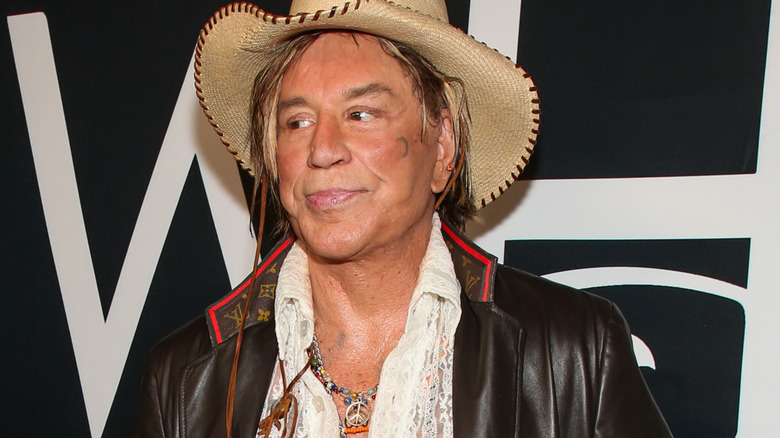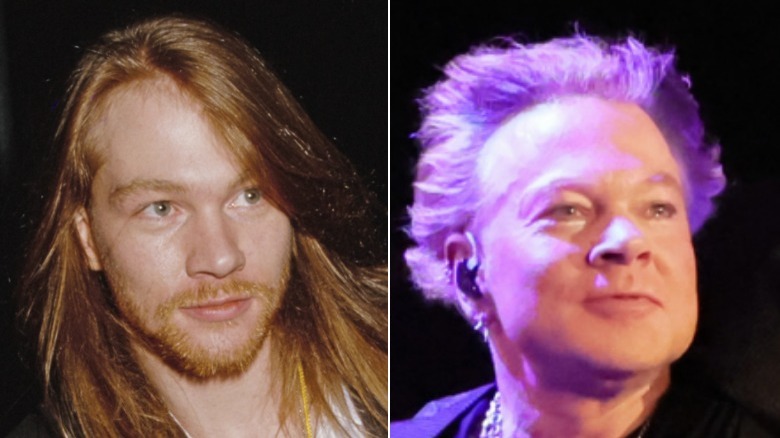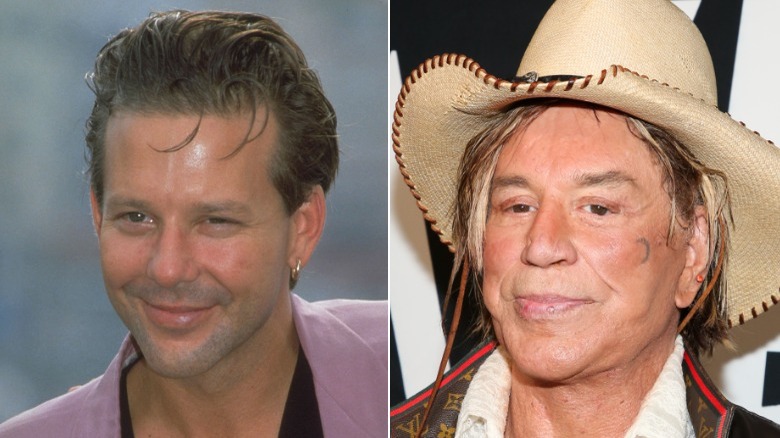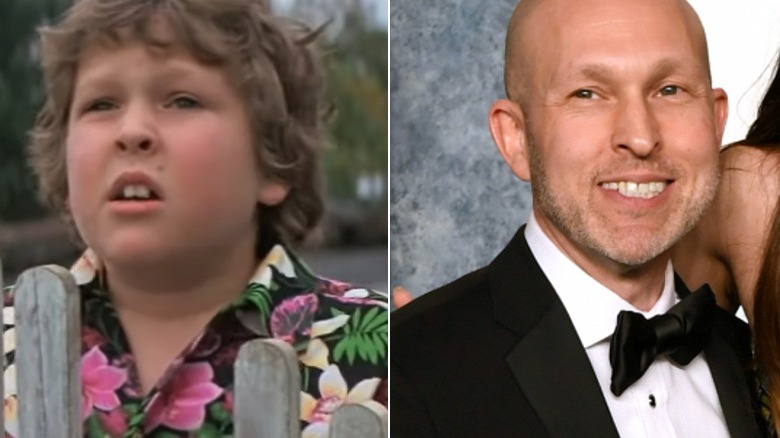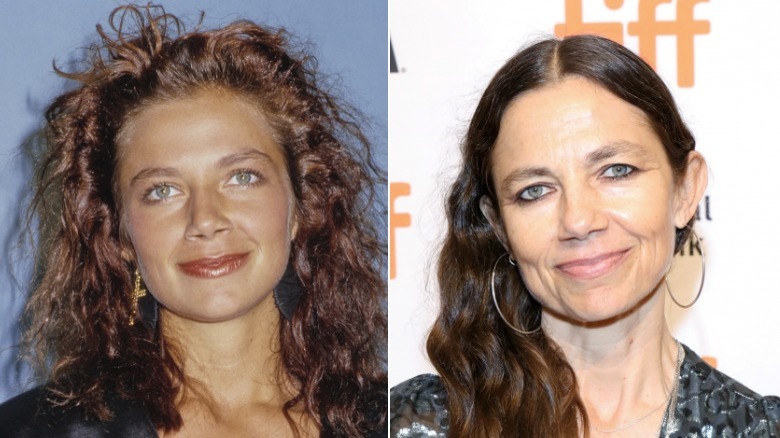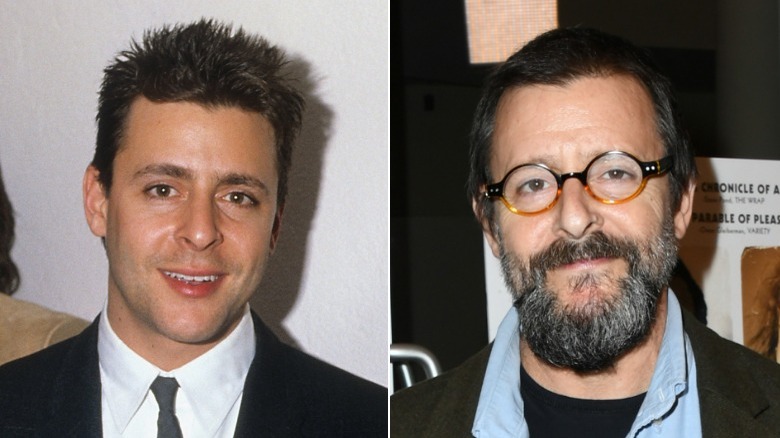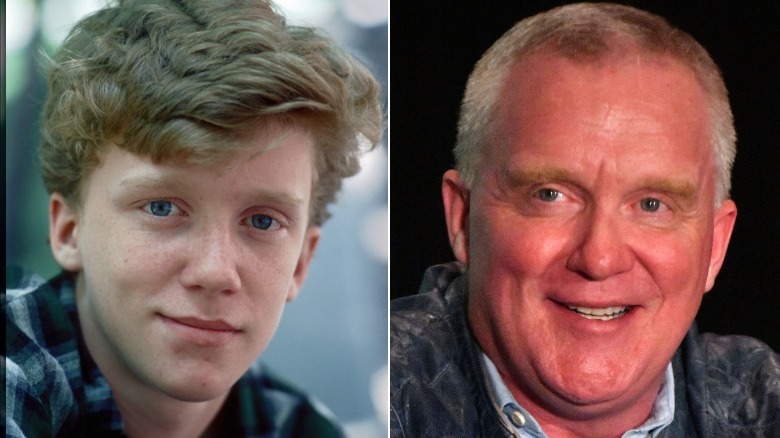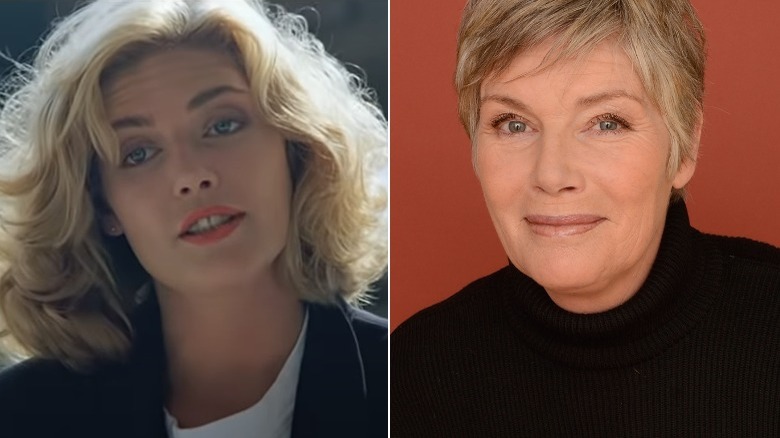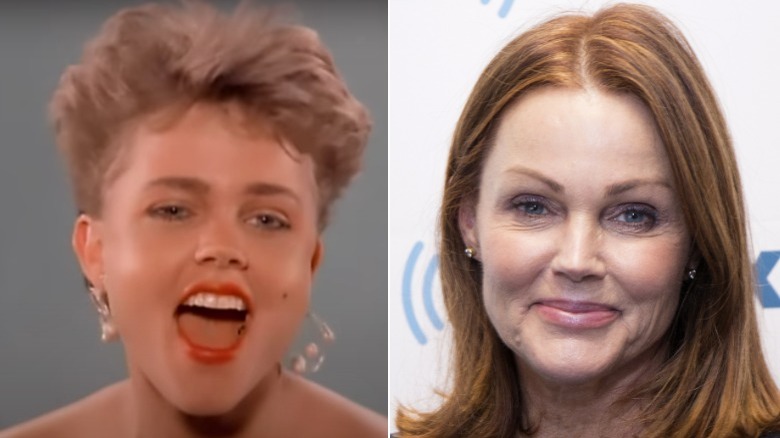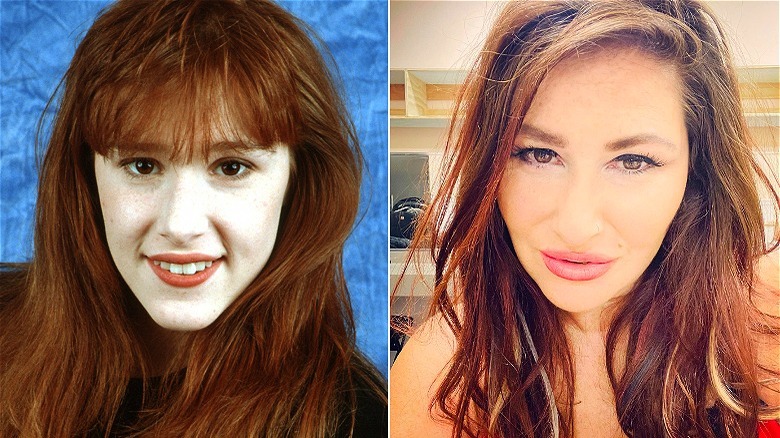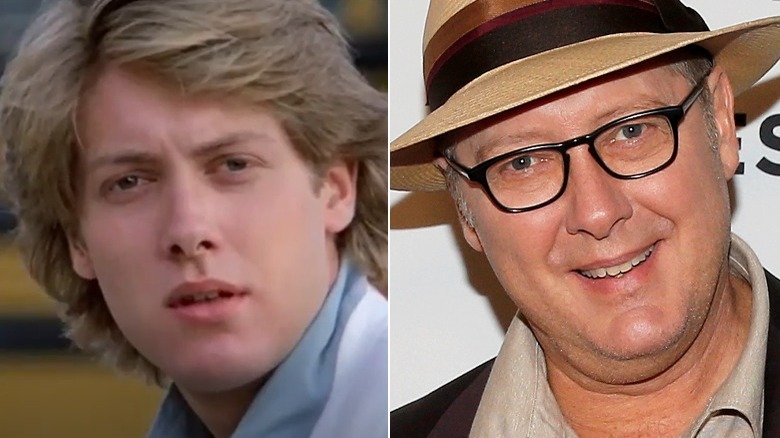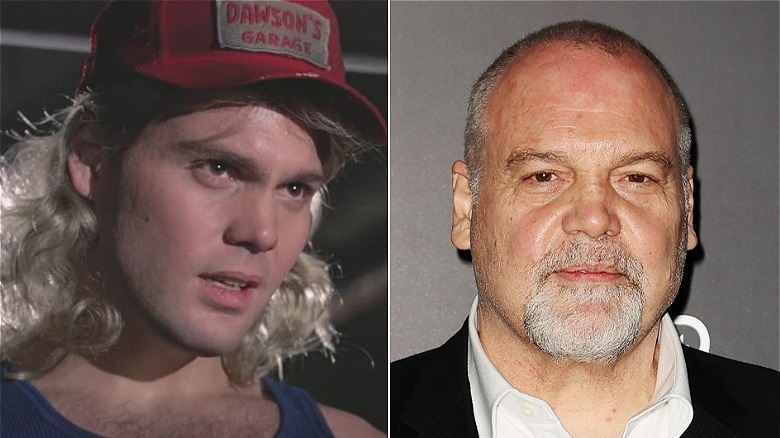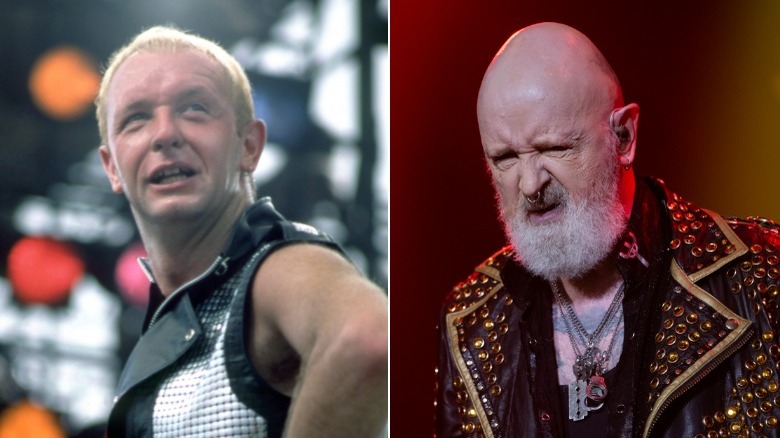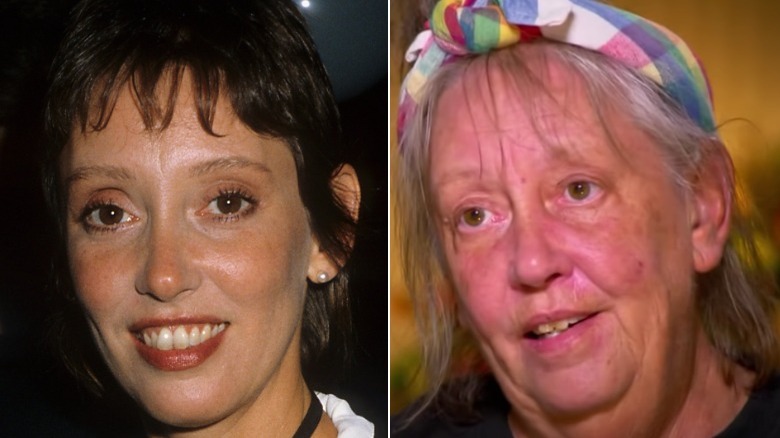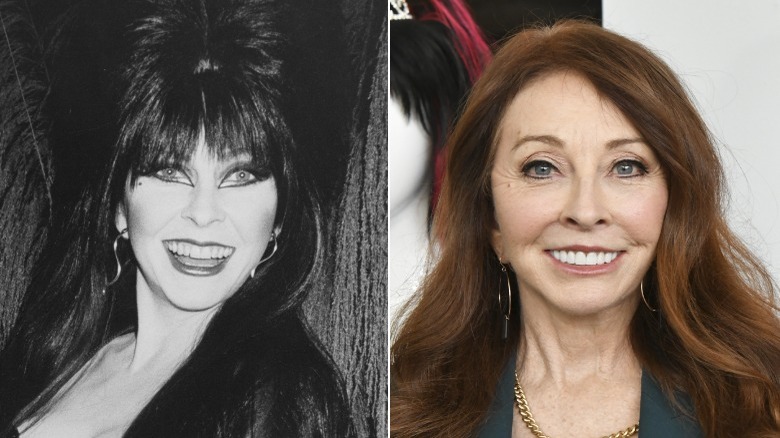80s Stars You Wouldn't Recognize Anymore
This feature references substance misuse and mental illness.
Much time has passed since the totally radical 1980s. It was the decade when Ronald Reagan was president, the DeLorean wasn't just a nickname for a fictional time machine in "Back To The Future," and malls were still the coolest place to hang out. The '80s were also a time for pop culture transformations. Cable TV was booming, the Sony Walkman, first introduced in 1979, went on to revolutionize the way we listen to music and early computer games were laying the groundwork for the Internet. To be a star in the '80s, one's talents and charisma had to stand out from the crowd. No matter the genre of entertainment, whether a rock star, actor, or pop music sensation, being an '80s star often meant having big talent, a big ego, and even bigger hair.
But naturally, times change, and so have the appearances of some of the decade's hottest stars. Of course, everyone's looks evolve over time, but sometimes a celebrity's look can drastically change over the course of their career. Some stars seemingly chase the ghosts of their youth through the help of their dermatologist while others have radically embraced their natural, aged beauty. These folks had some of their most iconic entertainment moments during the '80s and, regardless of how their new looks have been achieved, they've all undergone some serious physical transformations. Let's take a closer look at some '80s stars you wouldn't recognize anymore and see how they've changed over the years.
Axl Rose has grown into his rock 'n' roll style
Bombastic yet reclusive Guns N' Roses frontman Axl Rose has gone through many physical transformations over the years. With a style so iconic it became a Halloween costume inspiration, Rose has gone through many hairstyles, sporting everything from voluminous Sunset Strip-era flowing locks to a full set of intricate braids, his look usually completed by a trusty bandana tied across around his head. Although seen today as just another phase in Rose's evolving rock star aesthetic, his physical transformation in the early '00s shocked fans. Becoming progressively more reclusive during the production of Guns N' Roses infamous "Chinese Democracy" album in the '90s, Rose dodged plastic surgery rumors and became the target of internet gossip. In 2005, his refreshed look was called out by the now-defunct website, Awful Plastic Surgery (via The Seattle Times) and he was derided by the media.
Moving into the 2010s, Rose went through some body changes. In 2011, the Los Angeles Times observed that the frontman was heavier than in his '80s heyday, but maintained his nimble stage energy during an hours-long performance. Sure, these days Rose looks extremely well-rested and he's settled into a more mature build, but he's still rocking it like he's howling at The Roxy in 1986. In 2022, Rose performed a duet with country queen Carrie Underwood at the Stagecoach Music Festival and a year later, Guns N' Roses were set to headline the inaugural PowerTrip music festival, a metal spinoff of Coachella.
Mickey Rourke's continually evolving face
Boxer-turned-actor Mickey Rourke dazzled the '80s big screen in movies like "Diner," "The Pope of Greenwich Village," and "Angel Heart," and he was celebrated by critics for sexy performances in movies like "9 ½ Weeks." However, personal troubles and his sullied professional reputation led Rourke back into the boxing ring once more. After leaving Hollywood for "the sweet science," Rourke had trouble securing work, and by the mid-'90s, his face was undergoing a visible transformation. He slowly made his way back into the good graces of Hollywood with small parts in movies like "The Rainmaker," "Once Upon a Time in Mexico," and "Sin City," but it was his Academy Award-nominated performance in the 2008 movie "The Wrestler" that launched Rourke's acting career renaissance.
In 2008, Rourke readily admitted to The New York Times Magazine that his appearance had changed, noting, "I look back at 'Diner' and 'Body Heat,' and I don't know that person." He confirmed undergoing plastic surgery to the Daily Mail in 2009, telling the publication "Most of it was to mend the mess of my face because of the boxing, but I went to the wrong guy to put my face back together." In 2012, photos of Rourke bandaged after plastic surgery were published by The National Enquirer (via Radar) and he underwent nose surgery in 2017, sharing a post-op pic on Instagram. He also posts non-plastic surgery-related physical changes on his social media accounts, including a 2022 skateboarding accident that left gashes on his face (and isn't for the faint-hearted!).
Jeff Cohen is now a Hollywood power attorney
Audiences got to know Jeff Cohen as Chunk in the '80s classic kids movie "The Goonies." Known for his iconic "Truffle Shuffle" dance, Cohen shimmied his way into pop culture just by lifting his shirt. But unfortunately for Cohen, Hollywood became less receptive to his talents when he entered adolescence. He told the Daily Mail, "'It was survival of the fattest. But when I hit puberty, it was a career-ender for me. I was transforming from Chunk to hunk and I couldn't get roles anymore." Cohen's last acting credit was in 1991, but while he wasn't getting acting parts, he stayed in the entertainment business by founding his own law firm in 2002.
Even though he's making serious business moves on behalf of his clients, Cohen stays close to his "Goonies" roots. In fact, he's stayed so close that he represents his "Goonies" co-star, Ke Huy Quan, and was even instrumental in negotiating a deal for Quan's Oscar-winning role in the 2022 film "Everything Everywhere All At Once." Cohen might not resemble his childhood self, but he has a sense of humor about his life path, jokingly lamenting to People that becoming an entertainment lawyer made him lose his hair.
Justine Bateman crusades for natural beauty
Justine Bateman is aging in Hollywood on her own terms. She was a teen sensation on the '80s sitcom "Family Ties" playing ditzy, materialistic Mallory Keaton, but in real life, the actor was anything but dull. Her "Family Ties" co-star Micheal Gross told "ET," "[She was] extremely bright, extremely creative, a real head on her shoulders, and to me, she had the furthest stretch in terms of the cast of who she was portraying versus who she was in real life." After "Family Ties," Bateman continued acting, but she also delved into other creative endeavors like starting her own knitwear line, inspired by her participation in Hollywood knitting circles (yes, these were happening in early '00s Los Angeles).
Bateman is more than fine with aging naturally, and in recent years, she's become an outspoken critic of Hollywood's youth obsession. In her books, "Fame: The Hijacking of Reality" and "Face: One Square Foot of Skin," she not only addressed the personal burden of unattainable beauty standards but examined those stresses on a societal level. Justine Bateman absolutely refuses to get plastic surgery, telling Australian "60 Minutes" of her decision to opt out of cosmetic procedures, "I feel like not only would I erase all [the] authority that I have now, but also ... I am a different person now than I was when I was 20. And I like looking in the mirror and seeing that evidence."
Judd Nelson went from bad boy to mature adult
While Judd Nelson might be best known for his work in '80s movies like "The Breakfast Club" and "St. Elmo's Fire," he's been consistently working in Hollywood for decades. He might not look like rebellious high school student Bender anymore, but Nelson keeps moving forward. "I think that sometimes you don't have the opportunities for some of the most A-list-type movies, big-budget movies," he told AV Club of his work ethic. "But I think it's important to keep working and make the best of what's available. Because otherwise, what? Are you just going to get bitter and moan?'"
Nelson's post-"Brat Pack" career saw the actor playing a series of hotheads and baddies, including stints as a young firebrand attorney in "From The Hip," an unpredictable New York City detective in "New Jack City," and a sleazy record executive in the comedy "Airheads." But he made a pivot in the '90s by starring in the NBC sitcom "Suddenly Susan," trading in his slicked-back hair and sketchy facial hair for a softer, ready-for-primetime look. These days, Judd has matured into the kind of older mentor figure that Bender would have sneered at. He reflected on his evolution to Metro, saying, "I was like, 'Oh, wow, I'm the older guy now. How did that happen?' You blink, you have one drink, and look what happens."
Anthony Michael Hall's geek-to-character actor transformation
Anthony Michael Hall was a true '80s geek icon. The gangly, wild-haired kid was catapulted to fame with roles in John Hughes movies like "Sixteen Candles," "The Breakfast Club," and "Weird Science." However, as Hall matured, his desire to move away from his nerdy Hughesian roots caused conflict. He and the director didn't speak for decades after he turned down the starring role in "Ferris Bueller's Day Off." Hall instead chose to work on the drama "Out of Bounds," and at the time of its production, director Richard Tuggle observed him pulling away from his geek persona. He told the Los Angeles Times, "For some reason, he seems bent on destroying that part of himself. People respond to his innocence, but he wants to be a cool leading man."
Hall admittedly struggled in his twenties. Ironically, it was his portrayal of super geek Bill Gates in "Pirates of Silicon Valley" that got the attention of TV producer Michael Piller, who gave him cool leading man status in the TV series "The Dead Zone," a role that firmly jettisoned Hall into Hollywood maturity. Now in his fourth career in showbiz, Hall has established himself as a successful character actor, and one might be hard-pressed to recognize him in movies like "The Dark Knight," "Foxcatcher," and "Halloween Kills."
Kelly McGillis is secure in her skin
Kelly McGillis took '80s movie audiences' breath away as flight instructor Charlie Blackwood in "Top Gun," but for the Julliard-trained actor, her film career almost didn't take off. McGillis' look was equal parts serious and sensual. But as she told The Guardian she didn't have confidence in her appearance. "My whole image of myself was a tall, fat, geeky, ugly girl that nobody liked," she said. "I thought I was too tall for the movies — I'm still taller than anyone I work with. It never crossed my mind that someone might want to hire me for a movie." McGillis needn't have worried — not only did she co-star in the era-defining "Top Gun," but she also delivered solid performances in films like "Witness" and "The Accused."
As she told The Independent, McGillis abandoned acting on screen in the early '00s after working experiencing conflict with a difficult director on set. Abandoning Hollywood for Key West, Florida, she rediscovered the thrill of acting on stage. In 2019, when news broke that McGillis would not return for the "Top Gun" sequel "Top Gun: Maverick," she bluntly addressed the issue with "ET," saying, "I'm old, and I'm fat, and I look age appropriate for what my age is and that's not what that whole scene is about." She added, "To me, I'd much rather feel absolutely secure in my skin and who and what I am at my age, as opposed to placing a value on all that other stuff."
Belinda Carlise's journey from punk rock to pilates
A punk rock kid from Hollywood, Belinda Carlisle reached '80s music stardom fronting the all-girl band The Go-Go's and in her own right as a solo act. She might have been a Reagan-era music sensation, but she juggled music success with some serious substance misuse issues, before getting sober at age 47. "I can't believe I'm not dead," she told The Guardian in 2017. "I should actually look like the Phantom of the Opera with just two holes in the front of my face." Eight years earlier, she denied rumors that she'd had work done on her cheekbones and nose, telling Metro, "I really haven't had anything. I'm lucky that I have cheekbones that hold my face up for the moment."
Carlisle has also experienced weight fluctuations and she became a NutriSystem spokesperson in 2009. At the time, Carlisle's health regime included restorative yoga, NutriSystem meals, sobriety, and Buddhism. To her surprise — and despite getting dropped from her record label once she'd turned 40 — Carlisle's career is hotter than ever. "You know, pop music generally is very much about youth," she told The Sunday Post. "So this is all a big surprise but it feels right and I'm obviously not meant to hang it up just yet." These days, Carlisle swears by pilates and self-love. "I've accepted myself," she told The Guardian. "I am very comfortable in my own skin."
If you or anyone you know needs help with addiction issues, help is available. Visit the Substance Abuse and Mental Health Services Administration website or contact SAMHSA's National Helpline at 1-800-662-HELP (4357).
Tiffany has traded her mall sweats for rocker threads
Breaking into the pop music world with her tour of malls, '80s teen sensation Tiffany has seen plenty of career ups and downs over the decades. In her early years, Tiffany kept her look casual, telling the Los Angeles Times, "My image is jeans. An oversize sweatshirt. T-shirt. A pair of boots or sneakers. Very simple. And that's what I feel comfortable in." As she shared with Stereogum, her laid-back look was by design. "I never had a hair or makeup person," she explained. "I wasn't required to wear a lot of hair and makeup. I was never really allowed to do that because it was the image." Wanting to break away from her youthful persona, 18-year-old Tiffany dyed her hair black and got a nose ring. While going grunge might have helped her feel sexier, it didn't transition her career into adult stardom.
Wanting to break away from being perceived as a "mall girl," Tiffany leveraged her looks for a career comeback by posing for Playboy in 2002. She told Billboard of the move, "More than about being naked, it was about being [seen as] a woman." Tiffany has readily admitted to getting breast implants, and there's been rumors that she has also undergone rhinoplasty and has used face fillers. In recent years, Tiffany has traded in her girl-next-door shopping mall looks for a more glam aesthetic, posing in bedazzled tops and lounging in feather-trimmed gowns.
James Spader's ever-changing hairline has become a fan obsession
When Hollywood needed a villainous pretty boy in the '80s, they often turned to James Spader. As preppy Steff in "Pretty In Pink," and Rip the drug dealer in "Less Than Zero," Spader garnered a reputation for his good looks as much as his acting prowess. The actor was able to escape typecasting by taking on a variety of roles in film and television, including art house films like "Secretary" and "Crash," Hollywood blockbusters such as "Stargate" and "Avengers: Age of Ultron," and network TV fare like "Boston Legal" and the U.S. version of "The Office." Surprisingly, with his impressive acting resume, Spader's TV career wasn't a sure thing. When David E. Kelley pitched Spader to star on "Boston Legal," the response was, "James Spader is not a network face!" per The Guardian.
Oh, how the TV network suits were wrong. Spader won three Emmys for "Boston Legal," and he went on to star in the hit NBC drama "The Blacklist." As Spader undramatically settled into middle age, his changing look became critical to his role on "The Blacklist." He buzzed off his distinctive hair for the role of Red Reddington, sharing at the Television Critics Association press tour, per the Los Angeles Times, "Actors are burdened with everything they play. It's nice to have a different look." "Blacklist" fans love debating Spader's ever-changing hairline on the series, and it has become a hot topic for debate on social media.
Vincent D'Onofrio keeps changing his look for his craft
Even as a young actor in the '80s, Vincent D'Onofrio wasn't afraid to transform his looks. When he was cast as Leonard, the inept Marine in the 1987 Stanley Kubrick film "Full Metal Jacket," D'Onofrio gained nearly 70 pounds and shaved his head to look the part. "Men In Black" director Barry Sonnenfeld told Vulture that Kubrick even made D'Onofrio travel to his English estate just to make sure the young actor was packing on the pounds. You might not recognize him, but yes, that same year he had a small part in the teen cult classic "Adventures In Babysitting" as Dawson, a strikingly handsome mechanic with an uncanny resemblance to comic book hero Thor.
D'Onofrio continues morphing his looks for parts, including an intense physical transformation to play an intergalactic bug stuffed into human flesh in "Men In Black" and gaining weight yet again to play villainous Wilson Fisk in the series "Daredevil" and "Hawkeye." On the "ComicBook Nation podcast, D'Onofrio shared that he put on about 20 pounds to make Fisk's round face, but because of his age, he can't put on too much weight as it's simply not healthy. Not to worry though, sexagenarian D'Onofrio also keeps fit for work, sharing his gym sessions on Twitter.
Rob Halford lost the hair but kept the leather
Judas Priest frontman Rob Halford has been on the rock scene since the 1960s, but he reached a new level of fame in the '80s. Known as "Metal God" by his fans, Halford has been at the forefront of everything hard rock since the genre's inception. In the '70s, Halford sported a cape-centric aesthetic, but toward the end of the decade, he was clearly hell-bent for leather. At their '80s zenith, Judas Priest played for crowds in the hundreds of thousands. As they did so, the band embraced an all-leather biker look inspired by the aesthetic of underground gay clubs. As Halford told BBC6 Music, the look perfectly embodied their sound, but it also reflected his sexuality. "I kind of hid my identity in plain view by dressing like I did," he explained.
Although credited with being a pioneer of hair metal, Halford is now bald, keeping his hair strictly a beard affair. "Metal God" may no longer have flowing locks, but he still has the killer duds, as Halford continues to be kitted out in custom clothing from rock 'n' roll designer, Ray Brown. Still, the renowned cat lover doesn't shy away from boasting kitschy "Death Meowtal" cat t-shirts on Instagram. His looks may have changed throughout the years, but there is no doubt Halford keeps it metal.
Shelley Duvall has led a life away from the spotlight
During the '80s, Shelley Duvall's career was hotter than ever. The previous decade, Duvall appeared in a series of movies from director Robert Altman such as "McCabe and Mrs. Miller," "Nashville," and "Thieves Like Us." At the very beginning of the decade, Duvall scored two of her biggest movie roles, starring in director Stanley Kubrick's iconic horror film "The Shining" and Altman's iconic cult classic "Popeye." The '80s also saw Duvall becoming a cable TV innovator, overseeing all aspects of her anthology show, "Faerie Tale Theatre." She was celebrated not only for her talents but also for her idiosyncratic good looks. Regardless, Duvall recalled to People, "I didn't feel beautiful. I had big eyes, big ears."
Duvall walked away from Hollywood in the 1990s. Acting roles were drying up and she moved back to her home state of Texas to care for her ailing brother. In the subsequent years away from the spotlight, Duvall became an unexpected style icon, celebrated both for her beauty and her fashion sense. She lived her life in relative obscurity until she resurfaced nearly unrecognizable on an episode of "Dr. Phil" in 2016, which was focused on Duvall's mental ill-health. It was the first time that many of Duvall's former Hollywood friends had seen her since the '90s, and the interview drew the ire of Hollywood for being exploitative. In 2023, Duvall made an acting comeback in the low-budget horror flick "The Forest Hills."
If you or someone you know needs help with mental health, please contact the Crisis Text Line by texting HOME to 741741, call the National Alliance on Mental Illness helpline at 1-800-950-NAMI (6264), or visit the National Institute of Mental Health website.
Cassandra Peterson is just fine not being Elvira
You might not recognize Cassandra Peterson as an '80s pop culture icon, but you most likely know her alter ego Elvira, Mistress of the Dark. A struggling comedian who trained at The Groundlings improv theater in Los Angeles alongside noted funny people like Paul Reuben and Phil Hartman, Peterson launched her boobtacular character in 1981. From her humbling beginnings on local Los Angeles television, Elvira's tantalizing mix of silly, spooky, and sexy was such a hit with audiences that she even starred in her own movie "Elvira: Mistress of the Dark" in 1988.
When Peterson isn't decked out in full Elvira regalia, you could easily pass her by. She told HuffPost, "People just don't realize it's me when I'm out of the costume ― I have long red hair, I'm much smaller than people think Elvira is, I don't have giant boobs." Peterson came out in her 2021 memoir "Yours Cruelly, Elvira" and the disclosure made her more confident to just be, and look, like herself in public. "I can go everywhere as myself now, I don't have to dress up as Elvira. I can do conventions, show appearances, as myself." Peterson shared with IndieWire. "I'm not really out there doing Elvira as much. That's not to say I'm not doing Elvira again, but it's a lot. I can't do this drag much longer."

